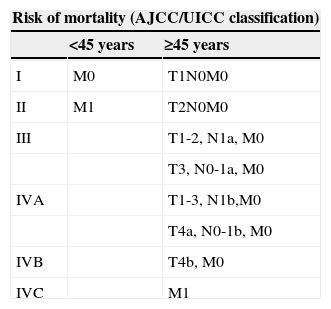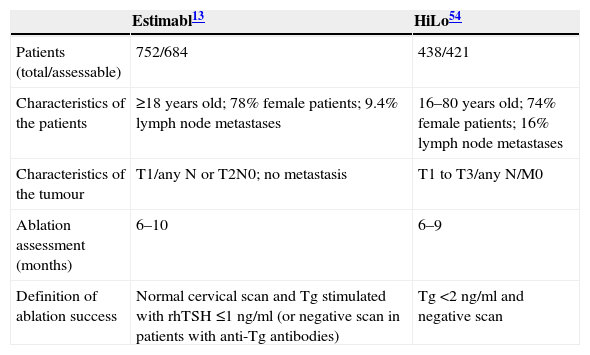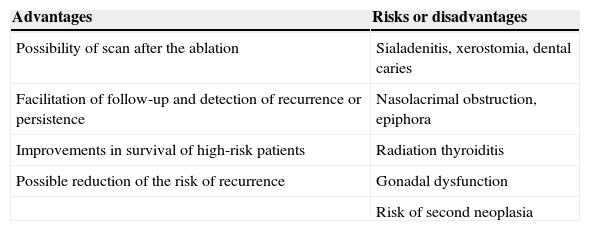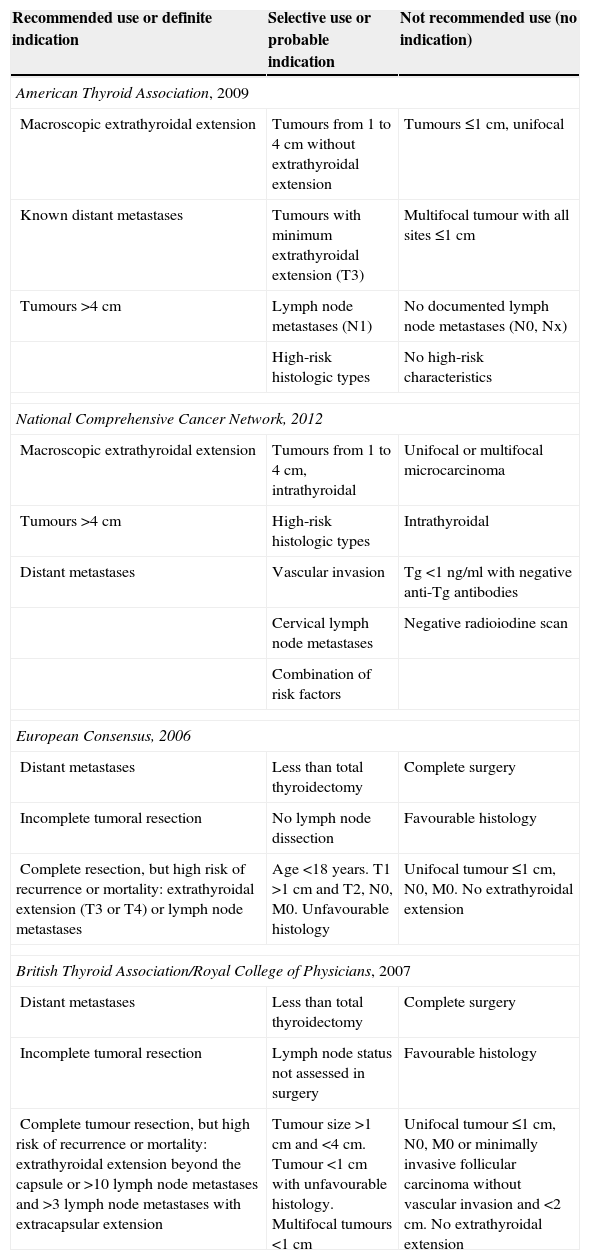Most patients with newly diagnosed differentiated thyroid carcinoma have tumours with low risk of mortality and recurrence. Standard therapy has been total or near total thyroidectomy followed by postoperative radioiodine remnant ablation (RRA). Although RRA provides benefits, current clinical guidelines do not recommend it universally, since an increase in disease-free survival or a decrease in mortality in low risk patients has not been demonstrated so far. Advancements in our understanding of the biological behaviour of thyroid cancer have been translated into the clinic in a personalised approach to the patients based on their individual risk of recurrence and mortality. Current evidence suggests that RRA is not indicated in most low-risk patients, especially those with papillary carcinomas smaller than 1cm, without extrathyroidal extension, unfavourable histology, lymph node involvement or distant metastases. Follow-up of these patients with serial measurements of serum thyroglobulin and neck ultrasound is adequate. Careful evaluation of all risk factors of clinical relevance will allow a more realistic assessment of each individual patient.
La mayoría de los pacientes con carcinoma diferenciado de tiroides presentan tumores de bajo riesgo de mortalidad y recidiva. El tratamiento estándar de estos tumores ha consistido en la tiroidectomía total o casi total, seguida de la ablación de los restos tiroideos con radioyodo (ARI). Aunque la ARI aporta ventajas, las actuales guías clínicas no la recomiendan de forma universal, ya que no se ha demostrado que aumente la supervivencia libre de enfermedad o reduzca la mortalidad en pacientes de bajo riesgo. Los avances en la comprensión del comportamiento biológico del cáncer de tiroides se han traducido en la clínica en una aproximación personalizada al paciente basada en su riesgo particular de recidiva y mortalidad. La evidencia actualmente disponible muestra que la ARI no está indicada en la mayoría de los pacientes de bajo riesgo, especialmente los que presentan carcinomas papilares menores de 1cm, sin extensión extratiroidea, histología desfavorable, compromiso ganglionar ni metástasis a distancia. El seguimiento de los pacientes de bajo riesgo con determinaciones de tiroglobulina sérica y ecografías seriadas se considera suficiente. La evaluación cuidadosa de todos los factores de riesgo de relevancia clínica nos permitirá una evaluación más realista de cada paciente concreto.











